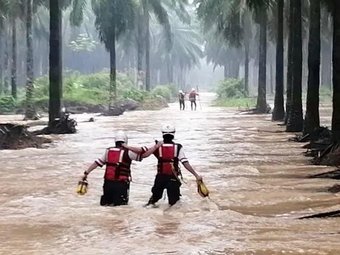Costa Rica
Key facts
Hazards covered by anticipation
Drought | Floods caused by tropical cyclones | Volcanic ash
No. of people reached by anticipation (activation)
Each Red Cross protocol anticipates reaching 2,000-3,500 families.
Anticipation partners in country
Costa Rican Red Cross | German Red Cross | Red Cross Red Crescent Climate Centre | National Meteorological Institute | National Emergencies Commission
Inform Risk Index (2022)
Hazard and exposure: 3.6
Vulnerability: 3.5
Lack of coping capacity: 2.6
Total: 3.2 (low)
Rank: 109
Country profile
An upper middle-income country, Costa Rica is in an earthquake-prone, volcanically active region between the North Pacific Ocean and the Caribbean Sea. As such, it is exposed to a variety of hydrometeorological and geophysical hazards, including floods, cyclones, landslides, earthquakes, drought and volcanic eruptions.
In recent decades, earthquakes, hurricanes and floods have caused loss of life and extensive economic damage. These events damage transport networks and other infrastructure, destroy homes, damage agricultural land and kill livestock. Nearly 80 per cent of the population is exposed to multiple hazards.
The Costa Rican National Risk Management Policy 2016-2030 defines the management of risk reduction, preparedness, response and recovery in the country. Costa Rica also has a national emergency fund, which receives annual contributions from public institutions and is managed by the National Commission for Risk Prevention and Emergency Response.
Projects
Implementing the FbF mechanism in Costa Rica
In 2019, the Costa Rican Red Cross, with support from the German Red Cross and the Climate Centre, began working with the Observatorio Vulcanológico y Sismológico de Costa Rica, the National Meteorological Institute and other strategic institutions from the National Emergencies Commission to develop Early Action Protocols for tropical storms, volcanic ash and drought.


